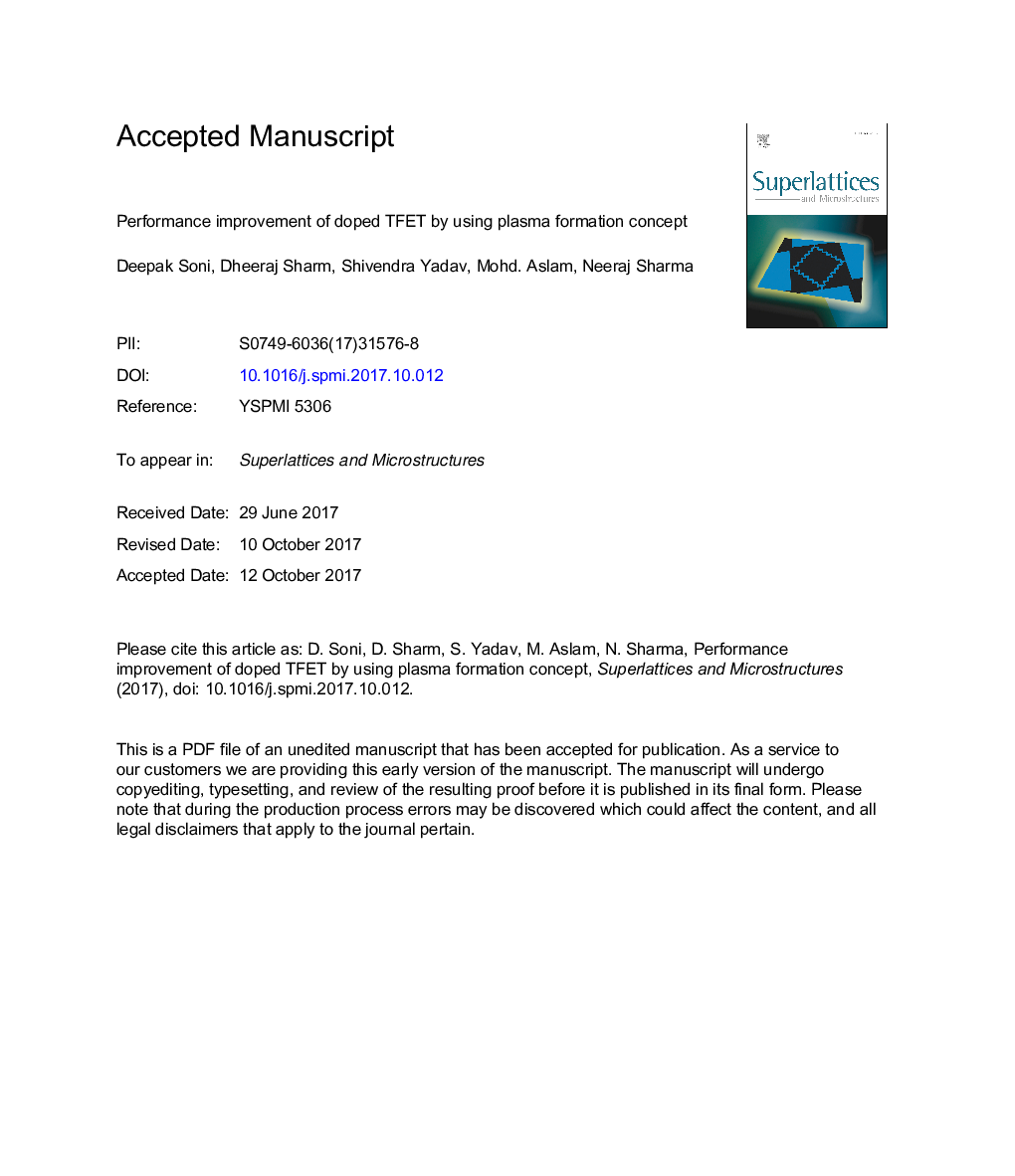| Article ID | Journal | Published Year | Pages | File Type |
|---|---|---|---|---|
| 7939204 | Superlattices and Microstructures | 2018 | 28 Pages |
Abstract
Formation of abrupt doping profile at tunneling junction for the nanoscale tunnel field effect transistor (TFET) is a critical issue for attaining improved electrical behaviour. The realization of abrupt doping profile is more difficult in the case of physically doped TFETs due to material solubility limit. In this concern, we propose a novel design of TFET. For this, P+ (source)-I (channel)-N (drain) type structure has been considered, wherein a metal electrode is deposited over the source region. In addition to this, a negative voltage is applied to the source electrode (SE). It induces the surface plasma layer of holes in the source region, which is responsible for steepness in the bands at source/channel junction and provides the advantage of higher doping in source region without any addition of the physical impurity. The proposed modification is helpful for achieving steeper band bending at the source/channel interface, which enables higher tunneling generation rate of charge carriers at this interface and overcomes the issue of low ON-state current. Thus, the proposed device shows the increment of 2 decades in drain current and 252Â mV reduction in threshold voltage compared with conventional device. The optimization of spacer length (LSG) between source/gate (LSG) and applied negative voltage (Vpg) over source electrode have been performed to obtain optimum drain current and threshold voltage (Vth). Further, for the suppression of ambipolar current, drain region is kept lightly doped, which reduces the ambipolar current up to level of Off state current. Moreover, in the proposed device gate electrode is underlapped for improving RF performance. It also reduces gate to drain capacitances (Cgd) and increases cut-off-frequency (fT), fmax, GBP, TFP. In addition to these, linearity analysis has been performed to validate the applicability of the device.
Related Topics
Physical Sciences and Engineering
Materials Science
Electronic, Optical and Magnetic Materials
Authors
Deepak Soni, Dheeraj Sharma, Shivendra Yadav, Mohd. Aslam, Neeraj Sharma,
